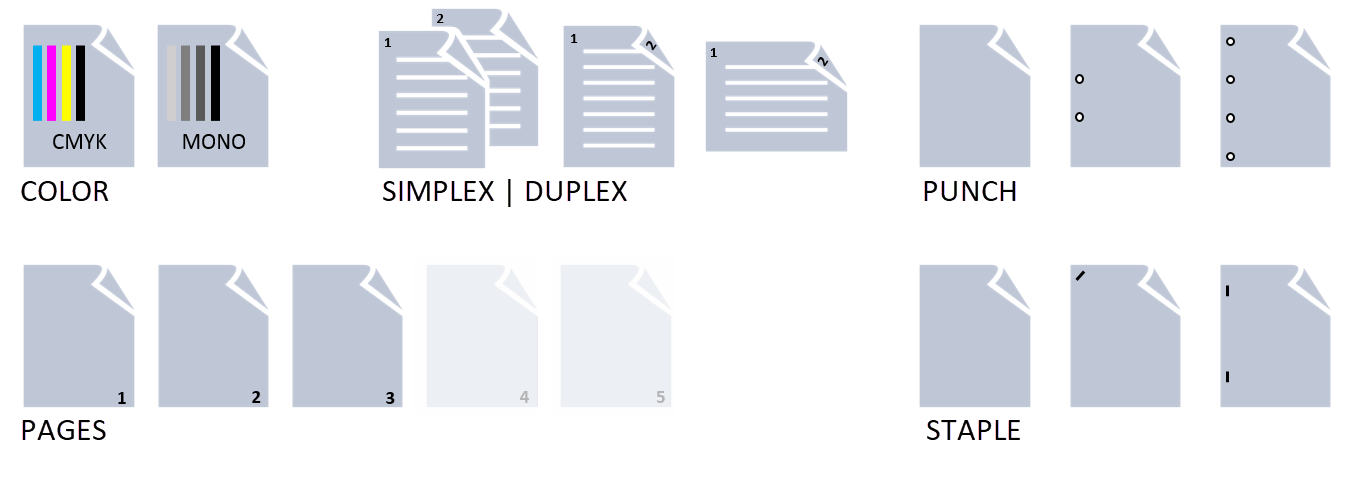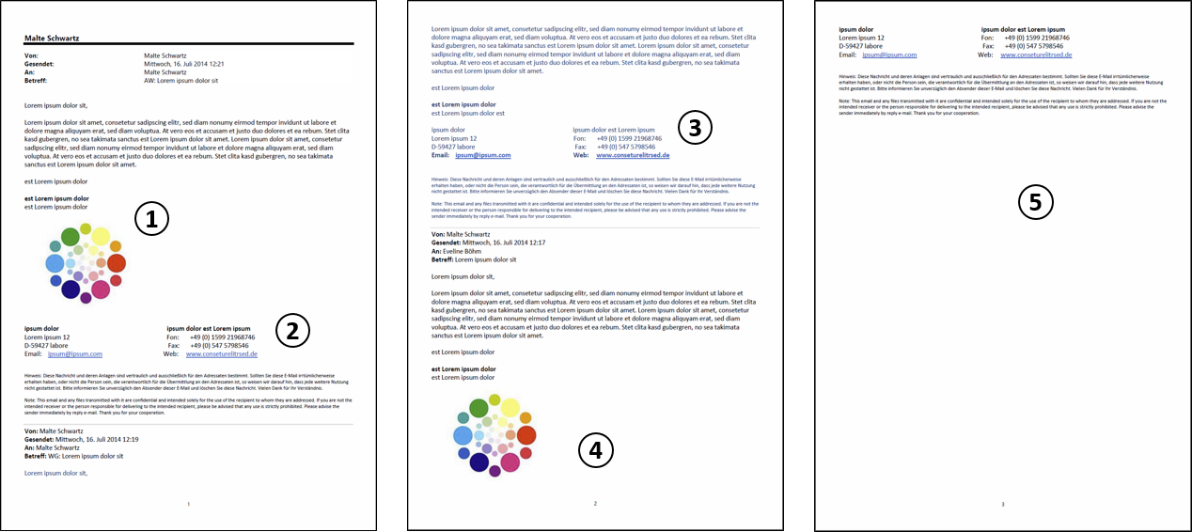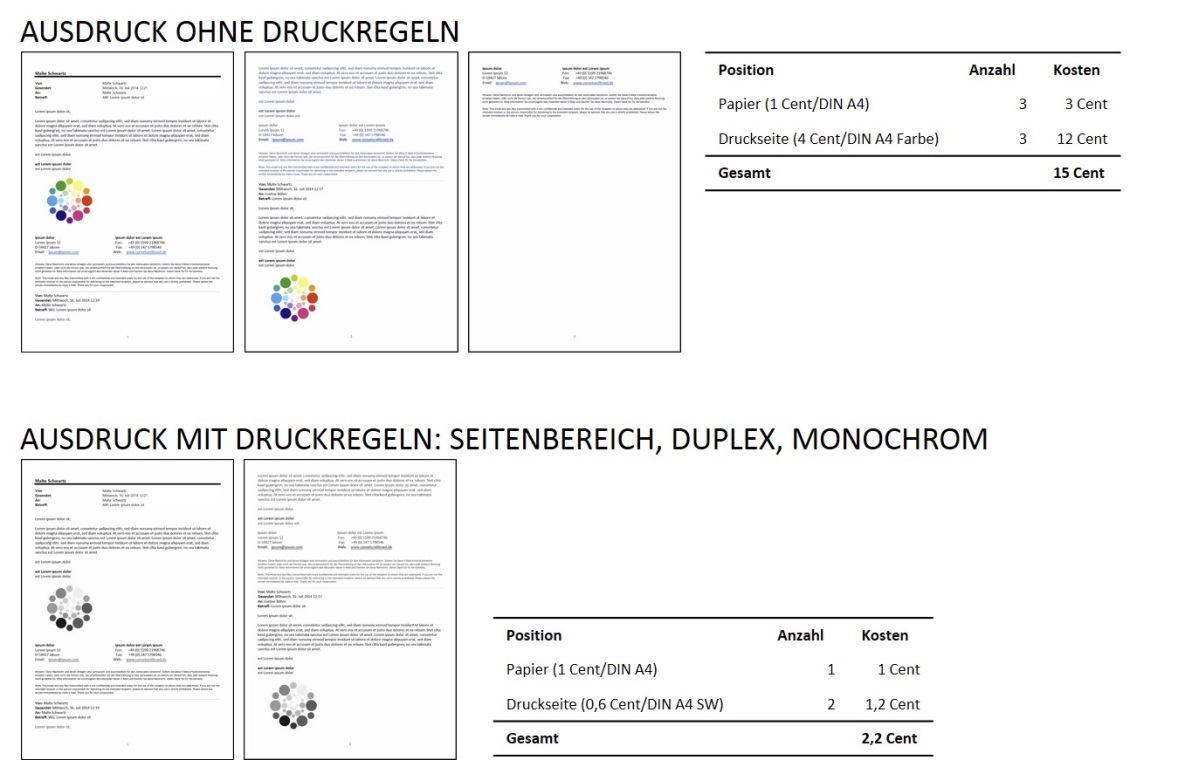Print rules
E-mails and websites are among the most printed documents in companies. These documents very often contain color elements, meaning that the prints are produced in color. This results in avoidable costs. For this reason, it makes sense in many places to define print rules for the company. Print rules work differently depending on the printer driver.
Print rules are used to give certain properties to print jobs with certain characteristics. For example, it is possible to print print jobs that originate from Microsoft Outlook in black/white and duplex by default, see Apply print rule module. Users can be informed of the change by e-mail.
The specified properties of the driver are overwritten when this is done (not all settings can be modified, see Possible changes to a print job). The Embedded Client shows the user when a setting has been changed by a print rule (see Editing Print Jobs). Depending on the rule settings, it is possible to change these properties again on the device using the Embedded Client.
The figure shows the possibilities for influencing the printing result using print rules. Print rules are recognized by a keyword in the print data stream (this can be the application that is printing, the file name or file extension, depending on what the driver and printing application are transmitting). The following document helps to determine the effects of print rules on costs and printing results.
When analyzing this e-mail, five key points can be identified that make the document expensive to print. Point 1 is the color logo of the company. Point 2 is that the hyperlink for the homepage and the e-mail address are in color. The answer at point 3 is dark blue and thus contains color attributes. Point 4 is the color logo of the company. Point 5 makes it clear that the last page of the email does not contain any important information.
A possible setting for print rules from e-mail programs could be that the e-mail is always printed monochrome, duplex and only the first two pages are printed. The effects of the print rule are shown in the following graphic.


